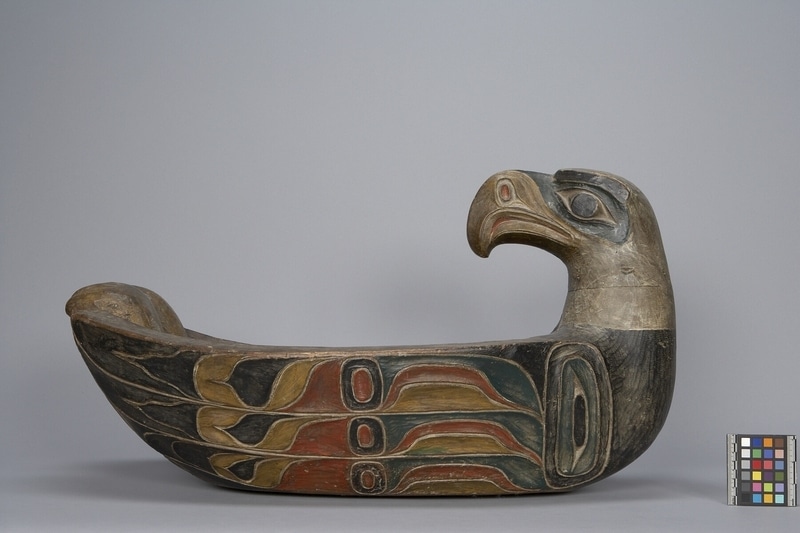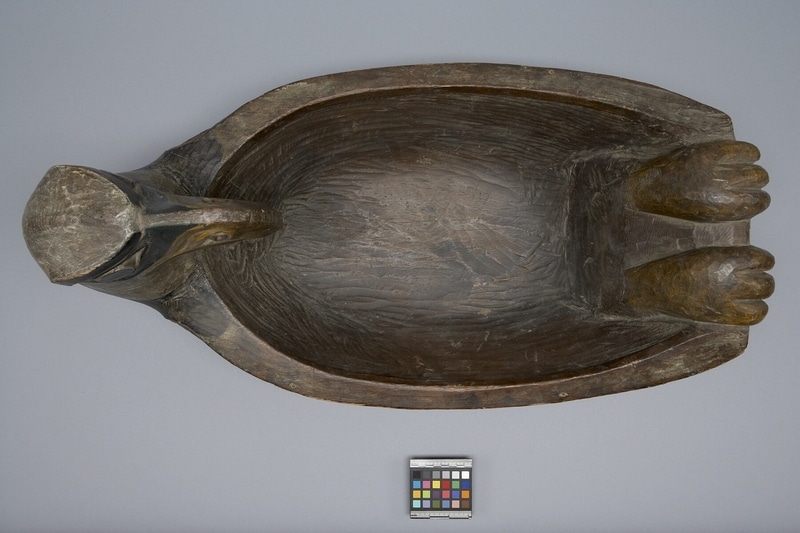Feast Dish Item Number: A6433 from the MOA: University of British Columbia



Description
Wooden feast dish carved in the shape of an eagle with a central, oval shaped concavity. The bird has its head painted white, green and yellow and is turned inward with its beak hanging over the bowl; its feet grip the opposite end. Below the feet are three vertical lines of white tail feathers detailed with ovoids and u-forms. The head is a separate piece attached with nails. The outer sides are carved with a wing consisting of three horizontal feather designs of black, yellow, green and orange ovoids, s-shapes, u-forms and split u’s. The body of the eagle is black.
History Of Use
Large feast dishes were used primarily to hold food served to guests at winter dance ceremonies and potlatches, as well as on other important social occasions. They also were symbols of wealth and prestige. The figures represented on feast dishes were family crests and important feast dishes were named.
Cultural Context
ceremonial; potlatch
Iconographic Meaning
Represents an eagle: kwikw. Eagle is usually represented in Kwakwaka'wakw sculpture with a short, thick, curved beak.
Item History
- Made in British Columbia, Canada
- Collected in Kingcome Inlet, British Columbia, Canada and Ukwanalis, British Columbia, Canada
- Owned by Luisa Dawson before March 11, 1952
- Received from Luisa Dawson (Seller) and H. R. MacMillan (Funding source) on March 11, 1952
What
Who
- Culture
- Kwakwaka'wakw
- Previous Owner
- Luisa Dawson
- Received from
- Luisa Dawson (Seller) and H. R. MacMillan (Funding source)
Where
- Holding Institution
- MOA: University of British Columbia
- Made in
- British Columbia, Canada
- Collected in
- Kingcome Inlet, British Columbia, Canada and Ukwanalis, British Columbia, Canada
When
- Ownership Date
- before March 11, 1952
- Acquisition Date
- on March 11, 1952
Other
- Condition
- good
- Current Location
- Case 39
- Accession Number
- 1888/0006